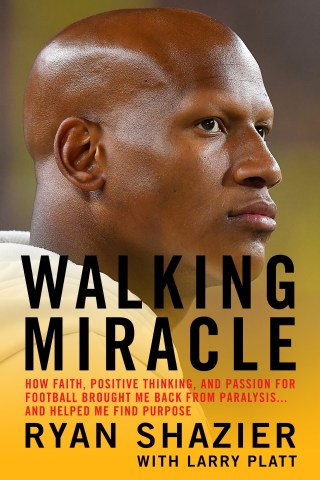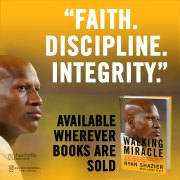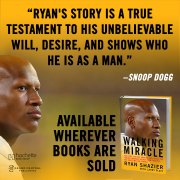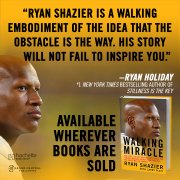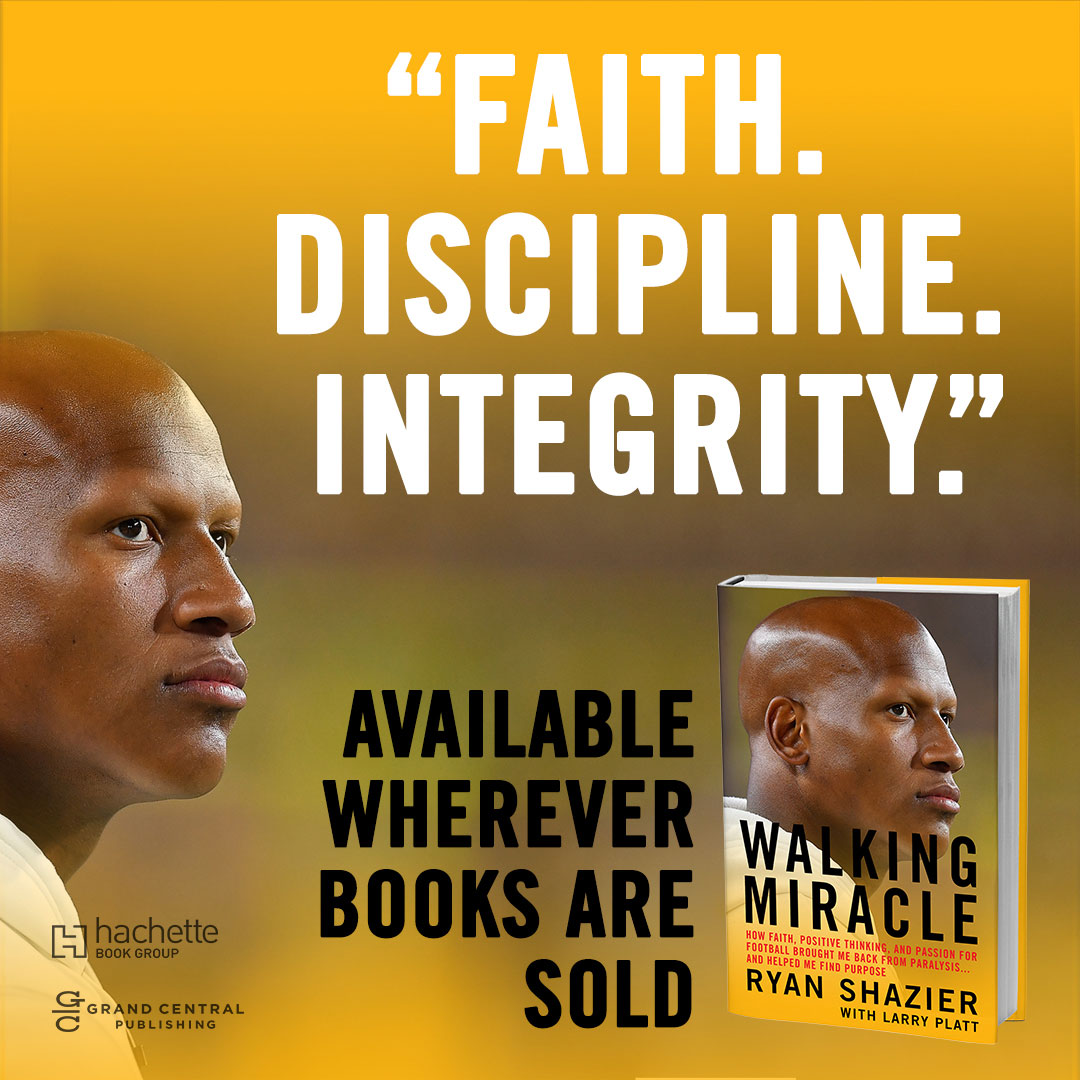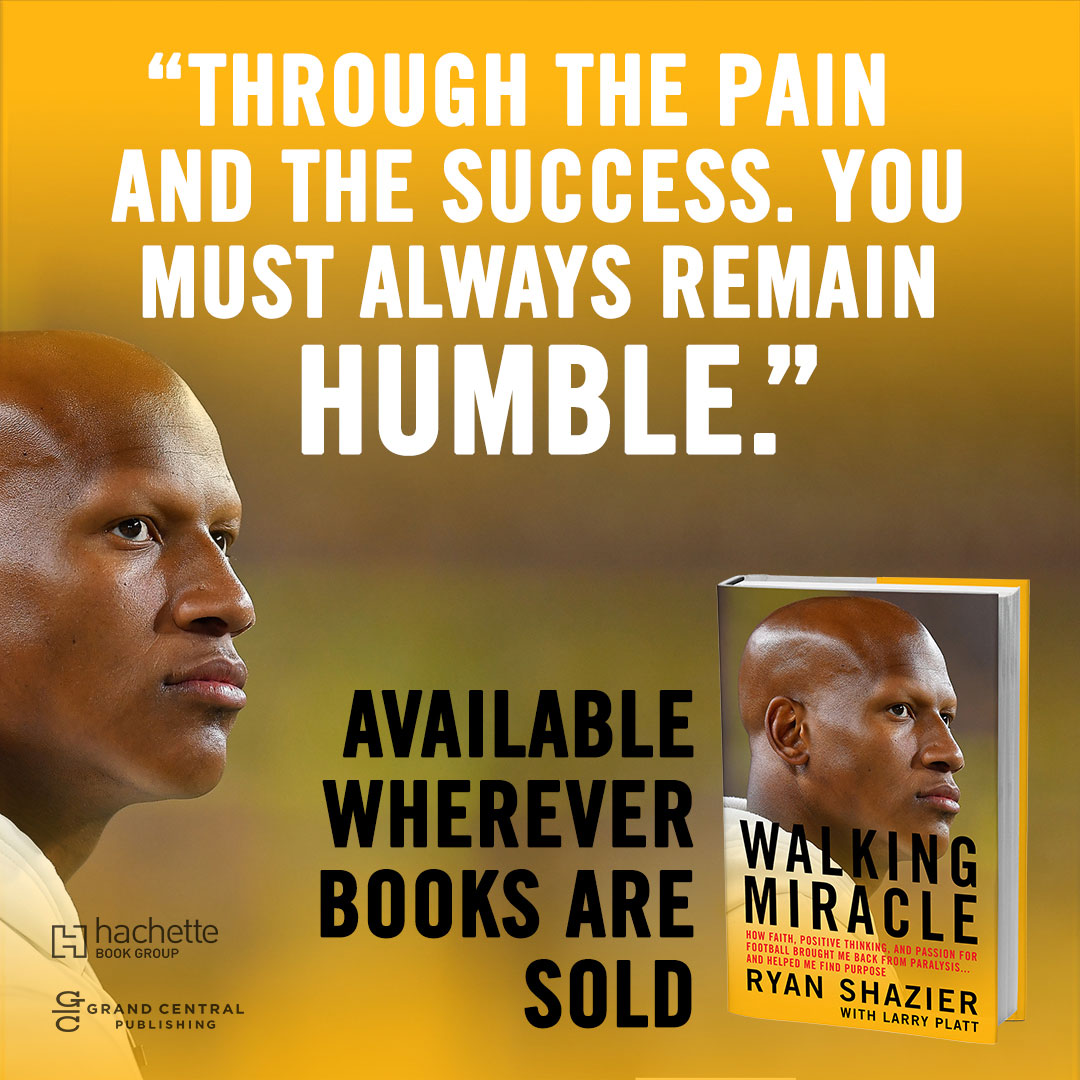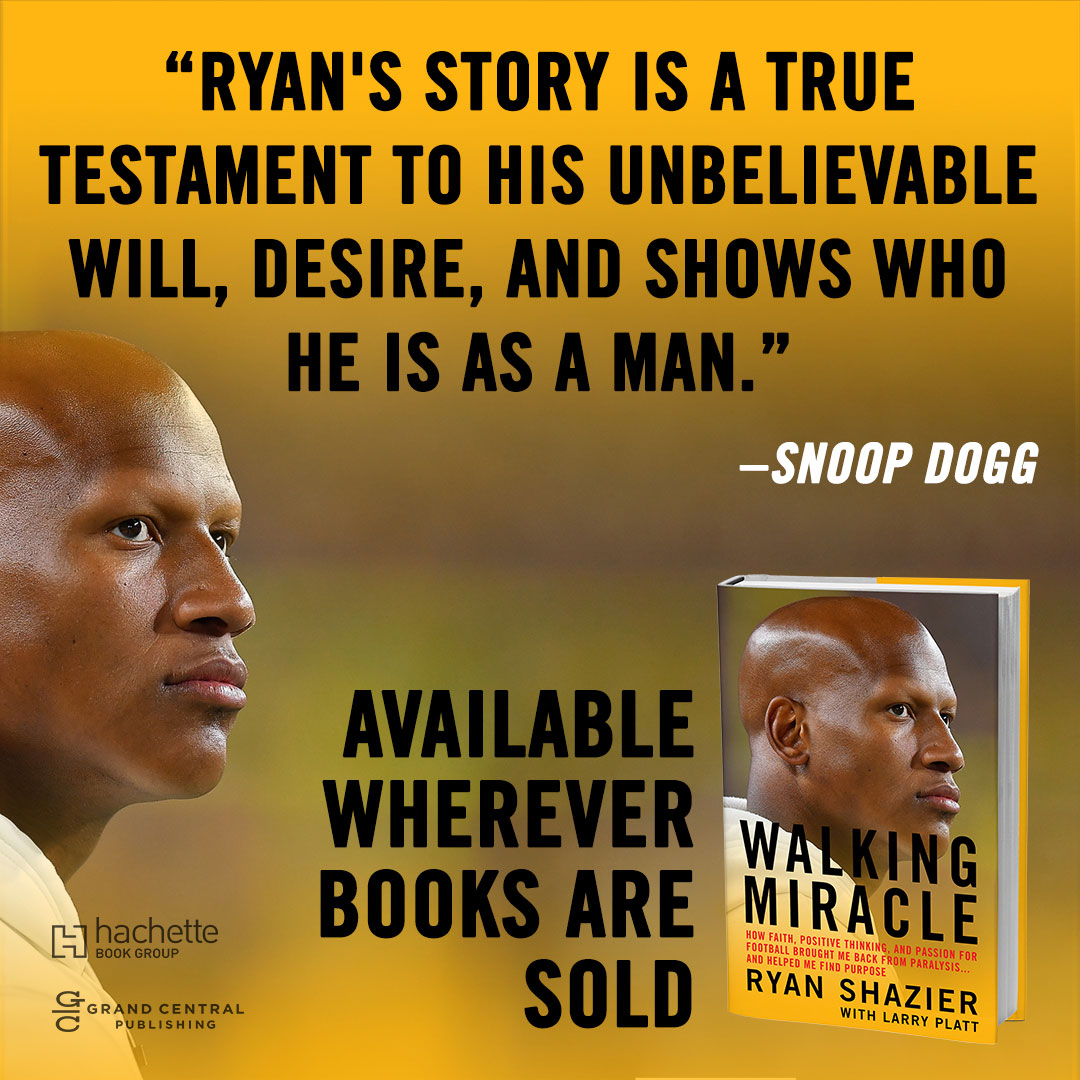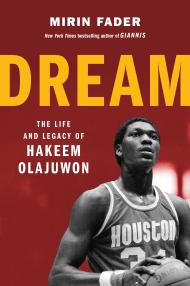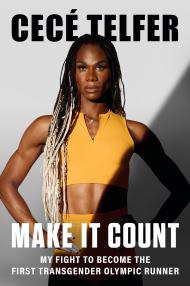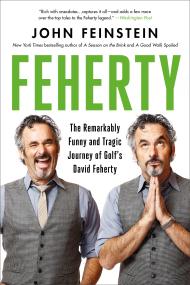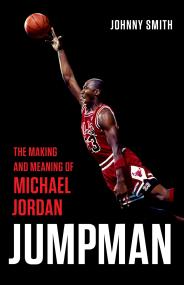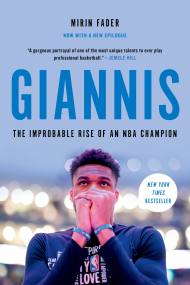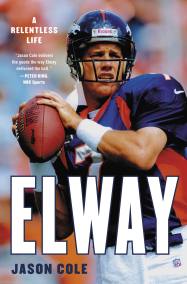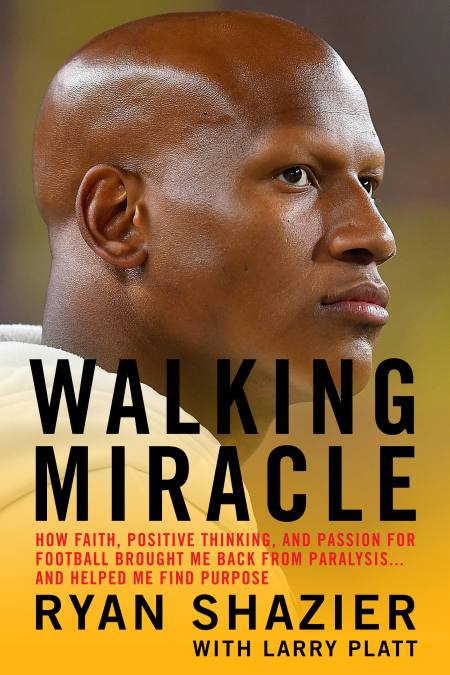INTRODUCTION
“YA GOTTA SHALIEVE!”
Man, Ryan, you’re not okay. That’s what I said to myself about two weeks in. I’d developed a urinary tract infection, and I had a fever. Even though the doctors had told me all about the spinal cord injury I’d suffered, even though they’d told me I only had a 20 percent chance of ever walking again, until now I’d assumed that I was going to get better.
When it first happened, when a routine tackle against the Bengals on the turf of Cincinnati’s Paul Brown Stadium left me with a burning sensation in my lower back and no feeling in my legs, my first thought had been, It’s a stinger—a nerve injury common in football that can temporarily send tingling, numbness, or loss of feeling, usually down the arm. No big deal. After the chopper ride from Cincinnati to Pittsburgh and surgery days later, I still had faith. I’d grown up in football and the church; I’d grown up following game plans. My new game plan was to figure out what I had to do in order to get better.
My faith had always been my not-so-secret weapon. When I was growing up in Fort Lauderdale, Florida, my dad, Vernon Shazier, was a preacher and my mom, Shawn, was a God-fearing, walking advertisement for the Golden Rule. They’re humble, loving, everyday folks. From them, I learned that God always has a plan for me. Mom used to tell me, “Whenever you’re in a tough situation, find a light in it.” In every situation, there’s always a way to focus on the good in it and not the bad—it’s just a matter of attitude. When I was five, my hair started falling out. I mean, in clumps. I was diagnosed with alopecia areata, an autoimmune disease that causes patchy hair loss. Imagine going to kindergarten bald. Kids can be less than tactful, and sometimes they’re downright mean. Mom’s take on it? “Ryan, God chose you to be bald,” she said.
Who was I to question His plan? It had been drummed into me: faith would set me free. But now, just two weeks after the play that would change my life, my faith was starting to crack.
Man, Ryan, you’re not okay, I kept telling myself. My cousin Nehari Crawford, who played football at Duquesne University, was seated by my hospital bed. Nehari had always looked up to me; I’d been his mentor. Now he was seeing me paralyzed from the waist down, feverish, sick to my stomach. I’d always been strong; strength, man, that was my thing. Now I was anything but. I felt the sickness rising in me and turned my head to throw up, but the vomit hit the rail on the side of my bed and some of it ricocheted back at me. You’re not okay, Ryan.
That’s when it started, the rush of “why me” thoughts. I’d always done the right thing: worked hard, treated people with respect and kindness. I’d been raised to believe that if you follow the rules, good things will happen. You get back what you put out there. And now . . . this? Fourteen days ago, I’d been a world-class athlete; now here I was, vomit-covered, feverish, unable to take a step or raise a leg or feel anything below the waist.
Why, God?
Why me?
What did I do to deserve this?
* * *
In the years since my injury, you may have caught glimpses of me in a string of viral, feel-good moments. There I was, limping—but walking—onto the stage at the 2018 NFL Draft to loud applause before a packed, emotional auditorium. There I was, dancing at my wedding just seventeen months after the play that had left me paralyzed. Or you may have seen my return to Heinz Field on a football Sunday, waving the Terrible Towel to the cheering Steelers faithful from my wheelchair. Or you may have seen the giant “Get Well Soon, Ryan!” card in downtown Pittsburgh signed by fans from all over the world.
But those viral moments since December 4, 2017, don’t really tell the full story of these last four years. Because it hasn’t been all inspiration and smiles. Walking Miracle is the story of a comeback attempt—a comeback from paralysis, yes, but also a comeback from doubt. It’s also more than that. It’s really a story about the power of faith and the questioning of that faith; about the role positive thinking can play in healing; about the lessons for overcoming adversity found in a brutal game; about love, between a man and woman—I don’t know where I’d be without my wife, Michelle—but also love between a city and an athlete, and how, in a crazy way, one always seemed to inspire the other.
I’d always stared down odds. How many kids get alopecia at five years old? How many refuse to let it define them? How many kids are told in high school that they’ll never be able to play the game they love again because of a severe case of scoliosis? How many are able to play anyway, and not only play but dominate at every level? How many kids play Division I football, let alone go on to the NFL and rise to Pro Bowl heights?
Long odds? Don’t bring that talk here, I’d always thought. But you want a challenge? How about an 80 percent chance of living the rest of your life in a wheelchair?
This book is about what happens when things look so bleak you want to quit. How do you push through? It’s about how you go from doubt to realizing, Hey, maybe this is God’s plan. Maybe I’m going through just what I’m meant to go through. Maybe, more than any tackle or interception on the field, overcoming paralysis is what I’ve been put here to do, to inspire others. And it’s about changing your thinking so that you see the opportunity that lurks in tragedy. I was twenty-five years old, and I’d thought of myself as a football player for nearly my whole life. Wreaking havoc on the football field was not only what I did; it was also how I saw myself. Coming face-to-face with the possibility that I’d have to rethink how I self-identified was more of a challenge than lining up against the meanest, biggest SOBs on any given Sunday.
How you get there, though, how you shift your thinking and embrace the obstacle as the way to growth—that’s a little more complicated than the posting of a fun moment on Instagram might suggest.
That day in the hospital, when I vomited on myself? It unlocked a period of doubt and despair. Some moments, I’d feel depressed. You’re never getting better, I’d think. Other times, I’d feel anger . . . at Him. My dad served You his whole life; he tended to Your flock faithfully. How could You do this to him?
But that day, in my fevered state, a hazy, fragmented memory started to come to me. It was from a lighter, more carefree time, a day during the 2016 season, the year before my injury. We were all in my Porsche Panamera: me; my best friend and trainer, Jerome Howard; my then girlfriend, Michelle; and my little brother, Vernon II. I was talking about how, even though I was going to the Pro Bowl, I still had a chip on my shoulder.
“I just want to make everybody believe in Shazier, man,” I said. “This is the year. The year everybody’s gonna believe in me.”
I was doing what great athletes do: they set goals and they tell themselves a story that helps them achieve them. My story was that no one believed in Shazier. I was going to make them believe.
“Believe in Shazier, I like that,” Michelle said.
“Shalieve!” Jerome barked out. “You gonna make them Shalieve!”
My eyes lit up. That was it—Ya gotta Shalieve! Something about the phrase struck me. I’d always believed in myself. But I also thought it was something for my teammates and the fans: I wanted them to believe that, on the field, I’d be their truest fighter. For the rest of the ride, we were calling it out. Every time we saw a passerby outside our window: “There’s a Shaliever!” We were laughing and high-fiving, energized by this fantasy of a city full of Shalievers.
Now, prone in a hospital bed, sick to my stomach, feverish, it came back to me, that image of all of us
laughing, drunk on the power of belief. Through the haze, I knew. This wasn’t just some fever-induced memory. No, this was a sign. This was God telling me He had a purpose for me that I might not understand.
Could it be just a coincidence that at the very moment my faith was starting to fail me, a flashback to pure positivity jumped to mind? Was this God’s way of telling me what I needed right now? It was as if He was reminding me that though the stakes were higher than ever before, the prescription was the same. I needed to Shalieve, just like always.
CHAPTER ONE
“DADDY, PRAY FOR ME”
By the time I became an NFL All-Pro, I was like an addict, living for the adrenaline rush of making a big play on the field. I don’t mean to make light of real addiction, mind you. But I really was hooked on the feeling that would shoot through me after forcing a running back to cough up the football or cutting off a passing lane and picking off a pass. You make the play and look at your opponents, and you can see how what you just did deflated them. They walk back to their huddle slumped over, their steps just a little more tentative than before. You’ve taken all their momentum and joy and given it to your team.
It wasn’t just the forcing of turnovers. Ever since I was five years old, I’d lived for the big hit, the kind that’s heard throughout the stadium, the kind that forces a collective gasp from the stands. You feel that thwack of body on body and then you stand over your opponent and you can almost see the self-confidence leave his body. You watch him gingerly get up (you always want him to get up) and you see him groggy or tentative or stumbling. You’ve stolen his swagger.
Football is such a fast game; to the untrained eye, it might appear that those big, thunderous tackles happen by accident. And while it’s true that much of what happens on the field is pure reaction, the product of hours of repetitive practice meant to train muscle memory, it’s also true that any tackle is about basic physics. In high school, my physics teacher never mentioned football, but what I heard was all about the game: the total force on a ball carrier is equal to the rate of change of momentum, and that momentum is the product of mass and velocity.
See, my dad, in addition to being a pastor, had been a high school defensive coach when I was in grade school. And he’d effectively been my unofficial coach since he’d held up a piece of paper in front of me when I was eight years old.
“Listen, Ryan, let’s say this piece of paper is the ball carrier,” he said, holding his other hand six inches behind the paper. “You actually don’t want to tackle this piece of paper. You want to tackle this hand behind the paper. You want to tackle through the paper. Because it’s easier to tackle somebody if you’re tackling through them. Remember, they’re trying to move forward, too.”
It was my first lesson in the physics of football. My job wasn’t to tackle the man in front of me; it was to tackle something behind him. And that led to physics lesson number two: doing that successfully was really all about momentum, and I had to use my speed to accelerate into the tackle, so the force was dictated by my side of the collision.
By the time I made it to the pros, before the NFL made helmet-to-helmet contact a penalty, I had a reputation for tackling with my head down, for leading with my helmet. Mind you, it’s not that I was seen as a dirty player. It’s just that I was always so focused on acceleration—on tackling through that paper—that I’d get there so fast and by the time I’d try to pick my head up, it was too late. I was already there.
We were all aware of this, my coaches and I. Even though helmet-to-helmet collisions weren’t illegal yet, they were always dangerous. That’s because of the biomechanics of the neck, which has a natural curve to it that allows it to act like a spring and absorb and disperse force. When a tackler drops his helmet and hits the ball carrier headfirst, he’s not only increasing his own chances of suffering a concussion but also exposing his neck to breaking. That’s because the impact sends a compressive force through the neck, causing it to become compacted and less able to absorb and dissipate the force of the hit.
I was very familiar with the stories about the dangers of headfirst tackling. Our defensive coordinator in Pittsburgh, Keith Butler, warned me about guys he had played with who had tackled with their heads down and had gotten injured. After every game, we’d watch the film of my tackles and freeze the video on the plays where my head was down. Before every practice, I’d attack a tackling dummy over and over again, concentrating on keeping my head up.
My trainer and best friend, Jerome, talked about it all the time. He’d played linebacker in high school and was on the All-America team in college. “Keep your head up, man!” he’d remind me, time and again.
And that’s what was so funny—and by “funny,” I mean “ironic”—about that routine play in Cincinnati on Monday Night Football on December 4, 2017. I’d managed to keep my head up; wouldn’t you know it, that’s when I got hurt.
I’d already made two tackles on the Bengals’ opening possession, and I felt like I was flying across the field, which was funny—again, ironic—because I’d had a high ankle sprain and had been questionable for the game.
“Maybe you shouldn’t play,” Michelle had said. But when the doctors left it up to me at game time, did they really think I wouldn’t give it a go for my teammates? Besides, we were in a race for home field advantage in the first round of the playoffs. With eighty-seven tackles and three interceptions in just eleven games, I was the leader of a defense that was fourth in the league, giving up 17.5 points per game. If I was walking, I was playing.
So there I was, bearing down on wide receiver Josh Malone, who’d just caught a checkdown pass from quarterback Andy Dalton. It was such a routine play that I had all kinds of time to read what was in front of me. So much time that, for the first time in my career, during a game I actually said to myself:
Keep your head up.
Just as I made contact with Malone, he turned, and that upturned head of mine made contact with his left hip. The next thing I knew, I was down. I instantly felt a sharp burning sensation in my lower back. I rolled over, clutching at my back. But while I could move my arms, I couldn’t move my legs. I couldn’t wiggle my toes. There was no feeling below the waist. My teammates gathered around. “I can’t feel my legs,” I said.
The once-deafening stadium had grown eerily silent. I lay there, hearing nothing but my own breath and the pounding of my heart. I could see our trainer moving my leg and asking if I could feel it. Feel what? I thought. Once in a while, a teammate would shout words of support. But as I was placed on a stretcher, I caught a glimpse of my teammates, many of them kneeling, their helmets off. Their facial expressions spoke volumes. I could see my man, linebacker Vince Williams, crying. Later, I’d read about the immediate fallout my injury had on my guys.
“I don’t think Vince stopped crying until after halftime, and that’s one of the most gangster dudes on the team,” safety Mike Mitchell said. “People had to grab him by the face mask and be like, ‘Yo, you’re the middle linebacker now. You can’t be sniffling.’ ”
I’d been where my teammates stood now. Football can be a brutal sport, played by massive men who collide at dangerous speeds. Usually, somehow, we walk away from our collisions, head back to our huddles and our trash talk. But when that doesn’t happen, when you walk away from the carnage of a crash but one of your brothers on the field—on your team or the opposing team—doesn’t get up and has to be carried off, you feel for him, yes, but you also feel the real-life terror of what we do, a terror we keep hidden away save for those moments. Now, as the ovation from the fans got fainter and fainter as I was wheeled down a tunnel and toward a waiting ambulance, I was face-to-face with that terror.
* * *
Stingers are an occupational hazard on the football field. They almost always occur after a tackle, usually when your shoulder is forced one way and your head and neck go the other. The result is a stretching of the brachial plexus, a nerve bundle that goes from the neck to the shoulder and down the arm. The nerves are temporarily stunned; as they try to recover, you’re likely to feel a burning, stinging, or tingling sensation—along with a dead arm that just won’t move.
You can watch that play in Cincinnati online now and see me roll over, clutching at my low back, where the burning was. You can also see me flexing my arms—checking to see if I had a dead arm. Nope.
Still, I was convinced this was just a stinger. That’s the positive thinker in me. Mom didn’t just tell me to “find a light” in every bad situation; she lived her life that way. As long as I could remember, she suffered from Crohn’s disease. And I mean suffered. One year when I was growing up, she spent the holidays in the hospital. We celebrated Christmas with her there. We opened presents in her hospital room, and she never let us see how much agony she was in.
She’d have these flare-ups of inflammation in her digestive tract, which brought on terrible stomach pains, severe diarrhea, bone-crushing fatigue, and weight loss. But you’d never know from Mom that she was suffering. I remember visiting her in the hospital, and she was always smiling, always telling us stories about the lives of her nurses: this one was from Cuba, that one was paying off her crushing college debt. Both Mom and Dad were always positive-minded, but Mom, without preaching, always reminded my brother, Vernon II, and me that someone else had it worse and we should be grateful for what we had.
Mom had instilled in us a way of looking at the world. You didn’t assume the worst, either of anyone else or of any situation you found yourself in. So as I lay on that stretcher in the tunnel of Paul Brown Stadium, it was only natural that I talked myself into believing that I’d only suffered a stinger. The feeling in my legs would come back.
In the tunnel, I called Michelle, my fiancée at the time. She hadn’t yet turned on the game, but she was already receiving texts from friends with messages like “Hope he’s okay” and “Praying for your family.” By the time I reached her, she knew this was serious. She was crying, and it was up to me to comfort her. “Michelle, calm down,” I said. “We’re going to get through this.” I’d probably end up missing a couple of weeks, I told her.
My next call was to my dad. “Daddy, pray for me,” I said. “I can’t feel my legs.”
“Son, we’re going to be all right,” he said, though I could hear the fear in his voice. Ever since high school, Dad and I would pray together before my games. In the NFL, I had many teammates who would prepare for a game by pounding each other on the shoulder pads while screaming or by blaring heavy metal or rap music. Hey, whatever works. I’d prepare by praying with my dad. We’d never pray for a win or a big play. We’d pray for my health and well-being, and for the health and well-being of everyone on the field that day. We’d pray for those we loved and those we hardly knew.
Dad suggested that we do that now. “Lord, please watch over Ryan and let his body heal,” Dad said, his voice thick with emotion. “We trust in you, Lord, and that You have a message, and that You’ll lead us to Your message.”
I could tell that both Michelle and Dad were scared and upset, but they were strong for me. In fact, I learned later that both cried many times over the following months, amid all of the lows and highs, all of the stress. But neither ever let me see them cry. Dad later said he’d cry fifteen or twenty times a day. But I didn’t know that at the time. Growing up, he was our family’s patriarch, and he was dead set against letting me see any doubt or weakness.
After my injury, I’d get a text from Dad every day: “God is with you. God is helping you. God is healing you.” He’d send a different text to Mom, Vernon II, and Michelle every day, too, coaching them through the stress and trauma of what we were all dealing with—even while he himself struggled.
Mike Tyson once said, “Everyone has a plan until they get punched in the mouth.” As a man of faith, Dad knew how easy it was to have one’s faith tested in times of crisis. “I needed for the family to know that we were not alone, God had not abandoned us,” he told me later. “God had not moved. He was still sustaining us, as He had done for all those years.”
Mom also put on a brave face. I learned later that she would guard my hospital door; whenever a visitor approached, she’d make clear to them in no uncertain terms that there was to be no crying once they entered my room. “Let it out now,” she’d tell them. I got nothing but positivity from the people who loved me, which in turn made me more positive.
The Steelers had two world-class neurosurgeons from the University of Pittsburgh Medical Center (UPMC) on staff, Dr. David Okonkwo and Dr. Joseph Maroon. Dr. Okonkwo—“Dr. O”—traveled to maybe one away game a year, and the game in Cincinnati was the one that year. From the moment I lay on that turf, Dr. O rarely left my side. He was with us in Cincinnati because Dr. Maroon was in—if you can believe it—Kazakhstan, making a house call: the prime minister was having back pain. “I think God put me in Kazakhstan so you could be there for Ryan,” Dr. Maroon later said to Dr. O.
Dr. O has a youthful way about him, but make no mistake: he’s a badass doc who has lectured around the globe on the treatment of traumatic injuries to the brain and spine. In the ambulance on the way to the University of Cincinnati Medical Center, he asked me to wiggle my toes.
Lo and behold, there it was—a wiggle. Fifteen minutes ago, on the field, I hadn’t even been able to do that. “That’s a good sign,” Dr. O said. Of course, I started asking the doc questions about when I could play again. “Think I’ll be ready to go by the Houston game?” I asked.
“Let’s not get ahead of ourselves,” Dr. O said, patting my arm. He later said that, starting in that ambulance, I’d ask him every day when I could play again. In the months to come, I would learn just how Dr. O approached his calling: one part medical provider, one part psychologist, one part friend.
With Dr. O at my side, I was rushed into the trauma unit at the University of Cincinnati Medical Center. There, I was suddenly surrounded by a sea of doctors in white coats and concerned-looking nurses, all looking down at me. I couldn’t even see the wall behind them; all I could see were all these health-care professionals, poking and prodding me.
I remember thinking that all these doctors and nurses must have been wondering who Dr. O was, given that he was dressed in a Steelers sweatshirt and a Steelers baseball cap. Is he a coach? Just when I thought someone was going to ask him to leave, bursting through the door came Dr. Joseph Cheng, the hospital’s chair of neurological surgery. He put his hand on Dr. O’s shoulder and addressed the roomful of docs and nurses.
“None of you know who this guy is,” Dr. Cheng said, “but if we just do what he says, everything is going to go much easier for all of us.”
Bam—now my guy was in charge. “We are going to be judged by a million subject-matter idiots,” Dr. O told Dr. Cheng and his staff. “What we do here will be scrutinized forever, so we’re going to get this right and we’re going to try everything.”
I’ve spent my life in locker rooms and have sat through more motivational speeches than I can remember. Dr. O’s comments in that room put everyone on the same mission, together. That’s great leadership.
Ever the optimist, I was still holding out hope that I’d suffered a stinger, but Dr. O knew that wasn’t the case. When he first knelt down next to me on that field, he knew this was a catastrophic injury, he later told me. A stinger is basically weakness in a muscle group that gradually fades as strength returns. But I had no feeling in my legs. I had a complete loss of function, and Dr. O knew the statistics in that case: a 3 percent chance of ever walking again.
Rather than tell me that, Dr. O just calmly ordered a series of MRIs and CT scans. Later, I came to understand that he didn’t believe in talking to patients in percentages because the percentages refer to populations, not individuals, which totally squares with my way of looking at things. It may have been a fact that only 3 percent of those who lose total function in their legs ever walk again, but that didn’t mean those are my odds, right? After all, as the night wore on, I was becoming a master at wiggling my toes—which meant, I later learned, that I was looking at something more like a 20 percent of walking again. I was getting better already, right?
* * *
Dad was at church when the first call came from the Steelers telling him I’d been hurt. Then, as he was racing home, his phone rang again. “This is serious,” the team representative told him. “You and Mrs. Shazier need to get here.”
The Steelers flew Michelle in from Pittsburgh and Mom, Dad, and Vernon II from Florida. Mom liked to say there was always something to find hope in, even in the worst situation—if only you looked hard enough. Well, when they landed on the private runway at the Cincinnati airport, a complete stranger overheard Dad say to Mom, “We need to get transportation to the hospital.”
“Excuse me,” he said to Dad. “Are you Mr. Shazier?”
He was a businessman about to depart for Florida on a private plane. He was also a former Bengal—lineman Alex Sulfsted, who, after his playing days, had built a successful career in real estate. He’d watched the game and seen my injury, and had actually been trying to reach our quarterback, Ben Roethlisberger, who he knew, to see if he could help in any way. Now he recognized my parents at the airport.
“I won’t be here for a few days,” he told my dad, extending a hand holding his car keys. “Take my truck.”
“Take your what?” Dad said, not sure he’d heard right. But he had. And Sulfsted was insistent. They exchanged cell phone numbers, and Mom, Dad, and Vernon II rode off in Alex Sulfsted’s Range Rover.
Can you imagine that? A complete stranger, handing over the keys to his car?
There are angels everywhere, if only you’re open to them.
Mom, Dad, and Michelle arrived at the hospital to good news. On early Tuesday morning, the morning after the injury, Dr. O explained that my body was waking up. Not only was I wiggling my toes, but I was able to move my thigh ever so slightly.
But the hopefulness that news inspired was short-lived. By Wednesday morning, I could no longer wiggle my toes. I’d slid back to the same state I had been in on the field: No feeling in my legs. A total lack of function.
An MRI showed I’d developed a blood clot, which was putting pressure on my spine.
This was going to be more complicated.
In effect, my injury had stimulated an inflammatory response, prompting the clotting. Remember Dr. O’s promise to “try everything”? Well, he attacked that blood clot like a pass rusher. He shot me full of a high dose of steroids, attacking the inflammation. And he drove my blood pressure up to raise my oxygen levels and send healthy cells into the spinal cord. Then came the torture of hypothermia.
“There’s reason to believe that, if we cool the injury, it will give it a better chance of recovering,” Dr. O explained. He stressed that this wouldn’t be pleasant.
I was all in. “Let’s go for it,” I said.
They wrapped me for hours in what was, in effect, an ice machine. The thirty-three-degree cold acted like an analgesic, calming the inflammation and reducing the swelling. I had to try to sleep through the night while shivering—all the self-coaching in the world couldn’t remove me from that reality.
The decision was made that I’d head back to Pittsburgh for surgery that would be performed by Dr. O and Dr. Maroon. But time was of the essence. The clot seemed to be breaking up, but I wasn’t out of the woods yet. I had to get to Pittsburgh quickly, so I was airlifted to UPMC on an air ambulance.
I’m not going to lie. It sure is easy to start asking yourself “Why me?” at times like this. But as I was lying there, my legs tightly wrapped in compression stockings to prevent any new clots from developing, whenever those “woe is me” thoughts started to bubble up, I would turn my attention to thoughts of that businessman and former player, Alex Sulfsted, whose car Mom and Dad was using.
He’d even gone a step further and insisted on flying them and Michelle to Pittsburgh on his private plane. It was smaller than the private jet the team had chartered for them, so Mom was a bit nervous—she doesn’t love to fly. But I couldn’t help but break into a smile when I thought of Michelle and my folks in that dude’s plane. His generosity and compassion made me feel hopeful and grateful. How lucky am I? I thought to myself, which sounds kind of crazy given my circumstance, I know.
And when I did fall back into disbelief, when I did wonder to myself, How is this happening? How’d I get here? I decided to take the question literally. Partly to take my mind off of what I was facing, I started thinking back. It wasn’t like my life was flashing before my eyes or anything like that. It was more that, lying in that air ambulance, it was comforting and calming to think back to when I’d met my first love and fallen hard for the game of football
